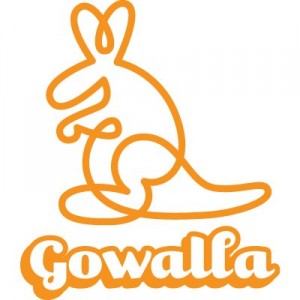 I’m calling it… Sept. 24, 2011. That’s the day Gowalla died. It’s also the day they released Gowalla version 4 and eliminated their biggest potential for making money.
I’m calling it… Sept. 24, 2011. That’s the day Gowalla died. It’s also the day they released Gowalla version 4 and eliminated their biggest potential for making money.
As they admitted on their blog, the design has quite a few usability issues for longtime users. They also compare their “bold” revamp to Facebook, Instagram, and Netflix. Bad news guys… those companies are leaders in their areas. Their biggest mistake however, is the elimination of virtual items.
They made the announcement they were going to remove this feature a month ago, but I didn’t really believe they’d do it. As I saw it, this feature was one of their only unique propositions over Foursquare, and as a marketer, I saw a ton of potential in it. This feature gave Gowalla the ability to offer marketers something unique – they could drop a virtual item at any location users checked into. Users could then be instructed to go to a location or event to trade the virtual item for something real.
For example, when I attended SXSW in 2010, I checked into the convention center and picked up an “ice ball,” which I discovered I could trade for a small sample of The Macallan at a party that evening. I also checking into a restaurant for breakfast one morning and received a virtual VIP wristband for the Gowalla party that evening. Thanks to Gowalla at SXSW that year, I had a free glass of scotch and got to skip the line into their party. As a marketer, I was ready to sign up and start getting virtual items placed around the country.
Unfortunately, when I contacted Gowalla and tried to schedule meetings to discuss how the virtual items could be used, they seemed to busy developing their app to talk. We tried for a few months to schedule a phone call, which we eventually gave up on.
|
View more presentations from Vayner Media
|
My hope was renewed when I saw a case study from Vaynermedia showing the potential of Gowalla’s virtual items. It seemed to confirm my thoughts, that this offered huge potential for driving traffic. As the study illustrated, you could target users who visited locations of interest relating to your brand. Additionally, it could drive measurable action – the quest of all great marketers. This case study provided the proof I needed to keep things moving and try to do this at a company I do work for.
Unfortunately, it was a difficult process, both internally and trying to contact Gowalla, and things never seemed to move forward. I assumed their business development people just didn’t know the potential they had right in front of them. But, once again, my faith was once again renewed later in 2010, when Gowalla announced a partnership with Disney. However, I was surprised to see that virtual items were never mentioned in the partnership. Additionally, as a design-rich company, I was appalled at the poor design of Gowalla’s Disney page.
I thought I’d wait to see what was happening with Gowalla at SXSW 2011 before making a final judgement. They seemed to be in full promotion mode there, with a Gulfstream trailer giving out t-shirts and a seemingly smaller event than last year. When I saw they had a contest to collect real stickers in a real passport, I knew they were on their way out. Even though they have a mobile app, for almost every know device (which allows you to collect passport stickers, pins, etc.), they used paper! It seemed that they couldn’t even figure out how to run a contest on their own platform (another warning sign for a marketer like me).
I’ve continued to fight – both with other geo-social fans and in my own head – for Gowalla’s potential. I really believe their idea for virtual items has potential, as proven in the Vaynermedia case study. However, when Gowalla made the announcement they were eliminating the virtual items, they admitted that fewer than half a percent of users participated in that feature. I believe that, much like Gowalla’s new redesign, users just didn’t know how to use it, and Gowalla didn’t do a good job of selling its potential to marketers.
For me – someone who checks in on Foursquare, Gowalla, Yelp, SCVNGR, Loopt, Latitude, and sometimes Google Places, Facebook Places, and PingMe – I think I’m giving up on Gowalla.
If I had the skills, I would build an app that uses the Foursquare API to incorporate Gowalla’s virtual items idea into the Foursquare experience. It provides an extra dimension and huge potential for a big revenue stream.
Remember when GEICO tried suing Google because State Farm could buy adwords on the search page when someone searched for GEICO? While Foursquare allows businesses to offer deals at their own locations, it doesn’t let them (yet) offer deals at other related businesses, or even better, at competitors locations, to lure them away. Gowalla’s virtual items provided that ability, and I wish I had the capability to take their idea, build it on Foursquare, and market it properly to marketers and users.

One response
I completely agree with this- Gowalla discounted the value of virtual goods. It is the only thing that I loved more than Foursquare/other checkin apps! Additionally, the full potential of real world items was just never fully realized. :(